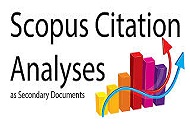Teaching Reading Strategies for Students at FPBS IKIP Mataram
DOI:
https://doi.org/10.33394/jk.v1i2.419Keywords:
Strategi Belajar, Strategi Kognitif, Metakognitif, Sosial atau Afektif.Abstract
References
Cochran.2008.Pedagogical Content
Knowledge : A Tentative Model for
Teacher Preparation. Education
Resources Information Center.
(Online).
(http://eric.ed.gov/?id=ED340683)
Lalu Gd Sumaryani KM, Teaching Reading Strategies
Alderson, J. Charles, and Bachman, Lyle F.
(2000). Assessing Reading.
Cambridge: Cambridge University
Press.
Berardo,A.S, (2006) The Use of Authentic
Materials in the Teaching of
Reading. The Reading Matrix.
Burns, P. C., Betty, D. Roe, & Elinor. P.
Ross. (1996). Teaching Reading in
Todays Elementary School (6th –
Ed). Boston: haughton Miffing
Company.
Chamot, A.U.( 2005). Language Learning
Strategy Instruction: Current Issues
and Research. Annual Review of
Applied Linguistics, 25, 112-130.
Cox, C. (1999). Teaching Language Arts. A
students-and Response-centered
Classroom. Third Edition. (Needham
Heights, Ma: Allyn and Bacon).
Cohen, A.D. & Macaro,E. (Eds.). 2007.
Language Learner Strategies: Thirty
Years of Research and Practice. New
York: Oxford University Press.
Carrell, P. L. (1984). The effects of
rhetorical organization on ESL
readers. TESOL Quarterly, 18.
Denzin, Norman K. and Lincoln, Yvonna S.
(1998)The Landscape of Qualitative
Research: Theories and Issues.
California: SAGE Publications, Inc.
Grabe, William. (2008). Reading in a
Second Language: Moving From
Theory to Practice. Cambridge:
Cambridge University Press.
Harmer, J. (2001). The Practice of English
Language Teaching. Third Edition
Completely Revised and Updated.
Malaysia; Pearson Education.
Lee Kyung Ok. (2003). “The Relationship
of School year, Sex and Profficiency
on the Use of Learning strategies in
Learning English of Korean Junior
High School Studentsâ€. British
Virgin Islands: Asian EFL Journal,
Volume 8, Number 4.
Nunan, D (1991). Language Teaching
Methodology. Great Britain: Prentice
Hall International Ltd.
Nunan, D (2003). Principles of Teaching
English. New York: Pretince Hall.
O‟Malley, et al (1985). Learning Strategy
Applications with Students of
English As A Second Language.
TESOL Quarterly 19 (3),pp 557-58
O„Malley, J.M. and Chamot, A.U. (1990).
Learning Strategies in Second
Language Acquisition. Cambridge:
Cambridge University Press
Oxford, R.L (1990). Language Learning
Strategies: What Every Teacher
Should Know. New York: Newbury
House.
Ozek, Yesim and Cievelek, Muharrem.
(2006). “A study on the Use of
Cognitive Reading Strategies by ELT
Studentsâ€. The Asian EFL Journal.
Professional Teachers Articles.
August 2006.
Patrikis, Peter C. (2003). Reading Between
the Lines: Perspective on Foreign
Language Literacy. London: Yale
University Press.
Rivers, W. M. (1981). Teaching Foreign
language Skill. Chicago: The
University of Chicago Press.
Scarcella, R. C & Oxford, R.L. (1992). The
tapestry of Language Learning: The
Jurnal Kependidikan 15 (2): 151-158
individual in the Communicative
Classroom. Boston: Heinle
Publishers.
Wasman, R and Rinsky, L.A. (1993)
Effective Reading in Changing
World. Great Britain: Prentince Hall
College.
Zhang, L. J. (2002). “Exploring EFL
Reading as Metacognitive
Exprience: Reader Awareness and
Reading Performanceâ€. Asian
Journal of English Language
Teaching. 12(pp.65-90
Downloads
Published
How to Cite
Issue
Section
Citation Check
License
License and Publishing AgreementIn submitting the manuscript to the journal, the authors certify that:
- They are authorized by their co-authors to enter into these arrangements.
- The work described has not been formally published before, except in the form of an abstract or as part of a published lecture, review, thesis, or overlay journal.
- That it is not under consideration for publication elsewhere,
- That its publication has been approved by all the author(s) and by the responsible authorities – tacitly or explicitly – of the institutes where the work has been carried out.
- They secure the right to reproduce any material that has already been published or copyrighted elsewhere.
- They agree to the following license and publishing agreement.
Authors who publish with JK agree to the following terms:
- Authors retain copyright and grant the journal right of first publication with the work simultaneously licensed under a Creative Commons Attribution License (CC BY-SA 4.0) that allows others to share the work with an acknowledgment of the work's authorship and initial publication in this journal.Â
- Authors are able to enter into separate, additional contractual arrangements for the non-exclusive distribution of the journal's published version of the work (e.g., post it to an institutional repository or publish it in a book), with an acknowledgment of its initial publication in this journal.
- Authors are permitted and encouraged to post their work online (e.g., in institutional repositories or on their website) prior to and during the submission process, as it can lead to productive exchanges, as well as earlier and greater citation of published work.
- Open Data Commons Attribution License, http://www.opendatacommons.org/licenses/by/1.0/ (default)

This work is licensed under a Creative Commons Attribution-ShareAlike 4.0 International License.








